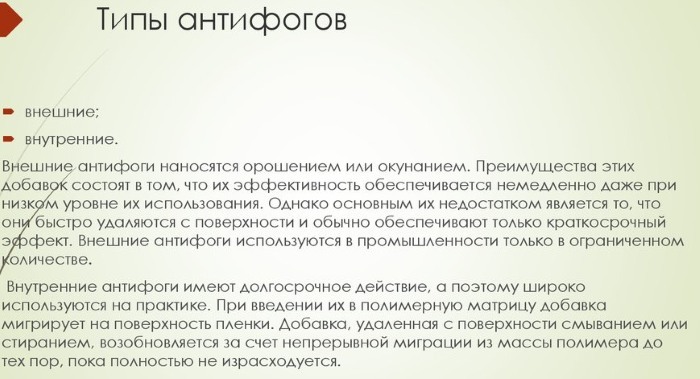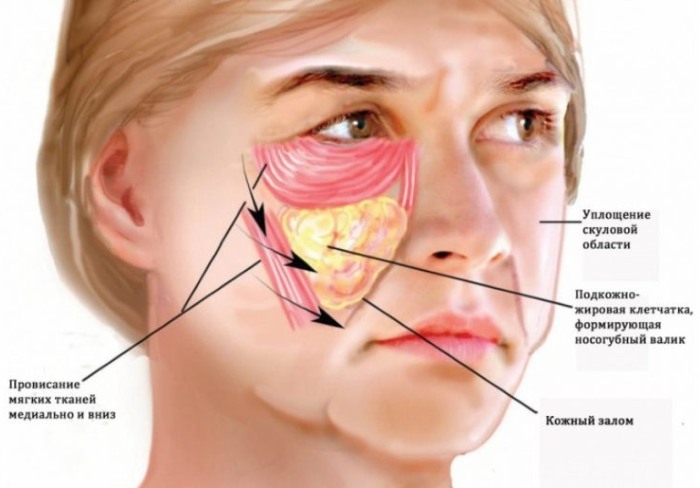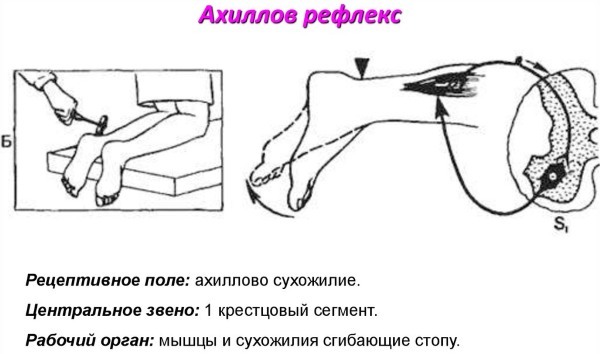Content
- When do baby teeth appear?
- Teething of molars in children
- Teething procedure in children
- Teething symptoms
- Why do gums swell during teething?
- When is gum swelling the norm?
- How long does gum inflammation last during the growth of deciduous teeth?
- Swelling of the gums not associated with teething
- Possible Teething Disorders and Complications
- How to help a child during teething with swollen gums
- Mechanical methods for babies
- Medicinal methods for children of any age
- Calgel
- Kamistad
- Holisal
- Dentinox
- Folk remedies
- How to soothe your baby with swollen gums and pain?
- Teething videos
Teething period in children, makes parents anxious. In order to transfer this time easier, adults need to know how the process should proceed, when to see a doctor. You should also read information about medicines and folk methods that can help relieve pain and reduce swelling of swollen gums.
When do baby teeth appear?
The formation of milk teeth begins at the stage of human embryonic development. At the time of birth, fully formed teeth are inside the gums. They begin to cut through the mucous membrane and come to the surface after the first 6 months of a child's life. The last milk tooth grows when the baby is 3 years old.
Sometimes the first teeth become noticeable and begin to "look out" from under the gums ahead of schedule, for example, at 4 months. Pediatric dentists say that this phenomenon is not always considered a deviation from the norm. Early teething is most often affected by a genetic factor. It happens the other way around, when teeth appear with a delay of 3.5 months. In both cases, specialist advice is needed.
The growth of milk teeth is influenced by gender. In girls, they appear a little earlier than in boys.
Teething of molars in children
Milk teeth have roots. By about 6 years old, they slowly dissolve, which is why the milk tooth begins to wobble. After it falls out, a permanent tooth immediately begins to grow in its place. The change of milk teeth with permanent ones, on average, lasts up to 12 years. The teeth of "wisdom" in humans grow much later, by the age of majority or even by the age of 25.
Teething procedure in children
Teeth erupt and fall out in the same order, and most often in pairs. In the table, you can consider the order of teething and loss of teeth, as well as the corresponding age of the child.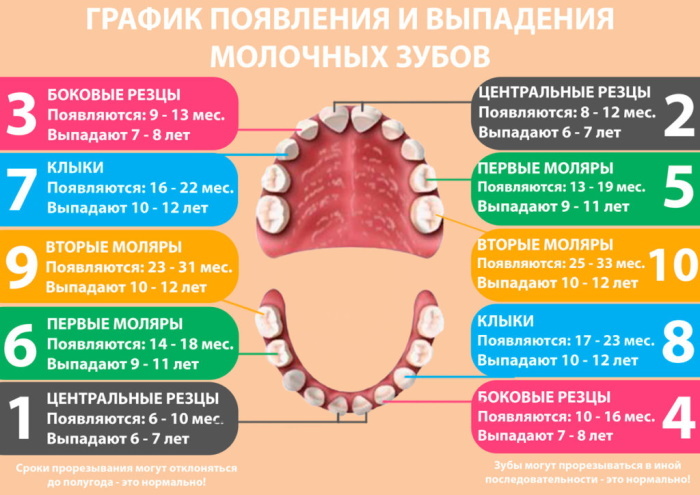
| Tooth names | Baby's teething age (months) | Child's age at loss (years) |
| Lower central incisors | 6-7,5 | 6-7 |
| Upper central incisors | 8-12 | 7-9 |
| Upper lateral incisors | 9-13 | 8-9 |
| Lower lateral incisors | 11-15 | 8-10 |
| Upper first molars | 14-17 | 8-11 |
| Lower first molars | 15-19 | 9-11 |
| Upper canines | 16-20 | 10-11 |
| Lower canines | 17-24 | 10-12 |
| Upper second molars | 22-32 | 11-13 |
| Lower second molars | 23-33 | 12-13 |
 There are 20 milk teeth in the child's mouth. After they fall out, 28 permanent ones will grow. The last to erupt are 4 wisdom teeth.
There are 20 milk teeth in the child's mouth. After they fall out, 28 permanent ones will grow. The last to erupt are 4 wisdom teeth.
Teething symptoms
What symptoms indicate teething in infants:
- Increased body temperature. A temperature of 37-38 degrees is considered the norm. It rises during the period of active swelling of the gums and eruption of the tooth through the mucous membrane. This is how the baby's body copes with the increase in blood flow in the gums.
- Irritability. From unpleasant sensations in the gums, and poor health in general, the child can be constantly naughty and sleep poorly.
- Profuse salivation. This is normal. Children are unable to control the amount of saliva in the mouth, so it can run down the chin. During the period of teething, the amount of fluid in the mouth increases. This is the body's defensive reaction to inflammation and increased sensitivity of the nerve endings in the gums.
- Loose stools. An upset gastrointestinal tract can occur from an excess of fluid, as children with sore gums may want to drink more often than usual. Loose stools can be considered normal if they occur no more than 4-5 times a day.
Symptoms of eruption of permanent teeth include only the instability of the milk tooth. This is a sign that the molar is about to emerge above the gum surface. You do not need to remove the milk tooth yourself. It will fall out by itself. You should consult a specialist only when the tooth hurts badly, or the molar began to erupt ahead of time, standing in the 2nd row.
When teething permanent teeth, you need to monitor how the gums look. They should not swell too much. The empty well should be filled with a blood clot. After 3-4 days, it will start to overgrow. After another 3-4 days, the top of the molar tooth should appear.
Why do gums swell during teething?
How the gums swell during teething, as well as their size and color, often makes parents worry. Experienced dentists say that inflammation during the appearance of teeth is a normal process.
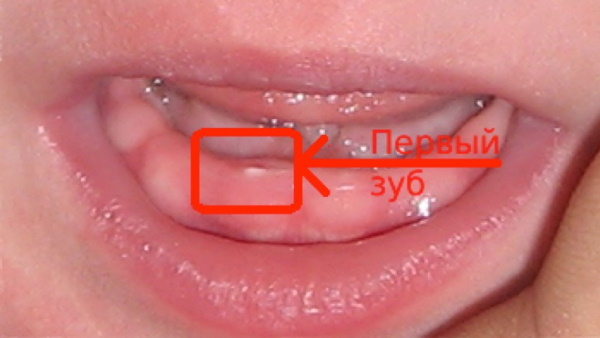
After all, the mucous membrane literally breaks apart under the pressure of a new tooth, and as in the place of any injury, a small swelling and redness forms around it.
When is gum swelling the norm?
How the gums swell during teething should be checked daily. The gums should be bright pink or reddish. The swelling will be slight. There should be no hematomas or purulent abscesses at the site of the eruption of the tooth. A sharp, unpleasant odor should not come from the child's mouth. These changes indicate a violation of the normal process of tooth eruption. Having found them, you need to contact your dentist.
How long does gum inflammation last during the growth of deciduous teeth?
How the gums swell during teething, and how long it takes, depends on their location in the mouth. In infants, the gums swell strongly when the lower and upper incisors erupt. The edema subsides only when the tooth is almost out of the gum. The appearance of the rest of the teeth is usually faster and less painful. Swelling from the gums begins to subside after the tip of the tooth is fully visible.
Swelling of the gums not associated with teething
How the gums swell during teething and how they look in case of diseases, you can learn to distinguish on your own.
To do this, you need to know the symptoms of common childhood diseases of the oral cavity:
-
Gingivitis. The mucous membrane becomes inflamed without disturbing the soft tissues located between the tooth and the gum. The gums are very red, the papillae are enlarged. It hurts to touch the teeth and soft tissues. The gums itch a lot. High temperature often rises (from 38 degrees and more).

Sometimes this disease flows into a more complex form - purulent gingivitis. An unpleasant, putrid odor appears from the child's mouth. The gums turn blue and may bleed.
This disease is treated with dental ointments, as well as antiseptics and mouthwash with herbal decoctions.
- Stomatitis. Small ulcers and plaque appear on the inflamed gums. There is also a sharp pain, the body temperature may rise. Stomatitis can occur due to mechanical damage to the gums, become a manifestation of allergies, or be caused by viral or fungal bacteria. Treatment depends on the type of disease. Usually they use special gels and rinse the mouth with antiseptic solutions.
- Periodontitis. This inflammation is accompanied not only by swelling of the gums, but also of the mucous tissues of the alveolar processes of the jaw. Gums bleed a lot and hurt. The child loses his appetite. Physiotherapy is used to treat this disease. In advanced cases, surgical intervention is required.
Developing infections can damage the rudiments of permanent teeth in children. Therefore, if similar symptoms occur, you need to contact a specialist and take the child for an examination.
Possible Teething Disorders and Complications
Sometimes teething is complicated. In such cases, experts advise parents not to panic. You just need to go to a dentist's consultation to identify the causes of the problems and get the opportunity to fix them in a timely manner.
What difficulties can be:
- Late eruption. The first teeth may not appear on time. This can be influenced by a genetic factor, as well as a number of diseases such as rickets, gastrointestinal disorders, changes in metabolism, or infection.
- Teeth erupted early. In some babies, the first teeth may appear at the age of 3.5-4 months. This phenomenon can occur due to disruption of the endocrine system, or due to heredity.
- Violation of the order of teething. The order of eruption of milk and permanent teeth can be influenced by diseases suffered by a woman during pregnancy. In children with weakened immunity and problems with the gastrointestinal tract, this problem may also occur.
- Tooth cut outside the row. This phenomenon is caused by an incorrect position of the tooth germ inside the gum.
-
Unformed teeth. It so happens that a new tooth appears above the damaged gum. Enamel breaks off from it, or it differs from others in color and size. Many factors influence the appearance of such a problem. A pediatric dentist will be able to establish the true cause of complications.
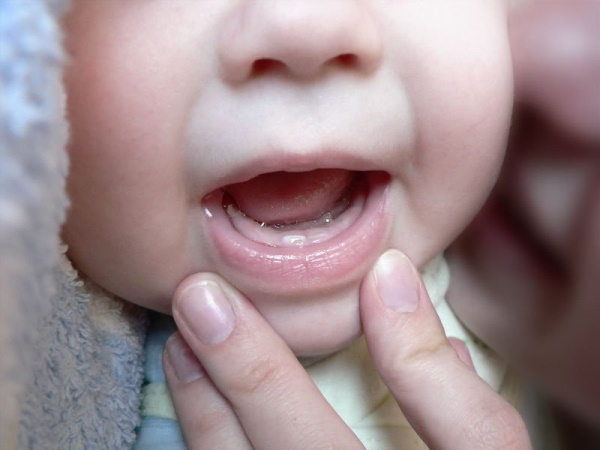
During the period of eruption of permanent teeth, parents often turn to dentists, complaining that molars have begun to grow behind milk teeth. This happens when the permanent teeth begin to appear before the roots of the deciduous teeth are completely absorbed. Seeing a specialist is the right decision. He will be able to gently remove a baby tooth, making room for a new one. Over time, the permanent tooth will align properly.
How to help a child during teething with swollen gums
When children have teeth teething, they become whiny and irritable. Parents need to prepare for this challenging period. There are many ways to relieve pain and speed up the growth of teeth.
Mechanical methods for babies
Pediatricians claim that gum massage helps to reduce pain. It should be done with clean hands or with sterile massage brushes. Press lightly on the baby's gum. It is important not to overdo it so as not to damage the mucous membrane in the child's mouth. At the moment of pressure, the pain subsides.
Silicone teethers are available at pharmacies and baby stores. Toys with pimpled and ribbed surfaces give a good effect. The child will bite them, massage the gums on their own.
Cooling sore gums can also reduce pain. To do this, you can buy a teether ring with a gel inside. The toy must be washed and then put into the freezer for 15-20 minutes. When the gel has cooled, give the ring to the child. If the baby refuses warm food, he can be offered chilled foods, for example: vegetable puree, apples, carrots.
Medicinal methods for children of any age
When massage does not help much, medications can be used. These can be dental ointments or gels with a cooling effect that contain pain relievers.
Calgel
Suitable for babies over 3 months old. It has an anti-inflammatory effect and gives a "freezing" effect, dulling pain. The active ingredient is lidocaine.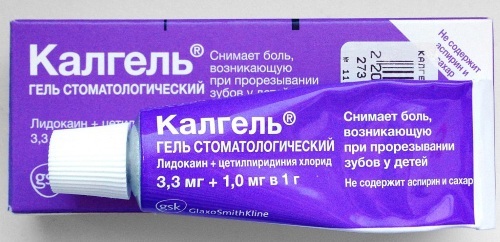
A small amount of gel (about the size of a pea) should be squeezed onto a clean, antiseptic-treated finger. Gently rub into the baby's gum. Immediately after applying the product, the pain will decrease. The effect will last for about 3.5 hours. You can reapply the gel after 20 minutes. Calgel should not be used more than 5 times a day.
Kamistad
The medicine is suitable for children over 12 years of age. Dulls pain, helps reduce swelling. Active ingredients: lidocaine hydrochloride, chamomile extract. The gel should be rubbed into the gum in a circular motion. The analgesic effect lasts about 4 hours. Do not use Kamistad more than 3 times a day.
Holisal
Suitable for children over 1 year old. It relieves pain, helps reduce swelling, acts as an antiseptic. Active ingredients: choline salicylate, cetalkonium chloride. You need to use Cholisal 20 minutes before eating, or before bedtime. The analgesic effect lasts for more than 4 hours. It is not recommended to apply the gel more often than 3 times a day.
Dentinox
Suitable for children over 6 months old. Relieves pain, reduces swelling of the mucous membrane and disinfects the gum surface.
Active ingredients:
- lidocaine hydrochloride;
- chamomile extract;
- lauromacrogol 600.

Dentinox
The dosage of the medicine is prescribed by the doctor. The analgesic effect lasts more than 5 hours. It is not recommended to use the gel more than 3 times a day.
Folk remedies
How can you help your baby without the use of medicines:
- Make compresses from chamomile decoction. Soak a sterile bandage with chilled broth and put on the inflamed gum. Keep for 10-15 minutes. Children over 6 months can be given 1-2 tsp. l. decoction per day to relieve severe swelling.
- Lubricate the gums with honey. This method is suitable for children over 8 months old. It is important to make sure your baby is not allergic to this product. A drop of honey should be rubbed into the gum in a circular motion.
- Wipe the gums with a soda solution. 1 hour l. Dissolve soda in a glass of warm water. Cool the solution, soak it in a sterile bandage, and treat the inflamed areas. Soda acts as a mild pain reliever and antiseptic.
Medicinal and traditional methods of treatment can be combined.
How to soothe your baby with swollen gums and pain?
Infants are soothed by frequent breastfeeding. During sucking, the gum rubs against the nipple, and the pain is dulled. In addition, the child feels the warmth of his mother's body, which makes him calmer. If breastfeeding is not possible, you can give the baby a pacifier and hold it in your arms, slowly rocking it from side to side.
You need to talk to your baby calmly during a gum massage. You can hum songs or recite poetry. This will distract the child. He will relax and allow the parent to do the procedure correctly.
Teething of deciduous and permanent teeth is an important stage in the life of babies. Adults should be patient and caring for children. It is necessary to often examine the child's oral cavity, check how the gums swell, and observe the general condition of the baby. If complications are suspected, consult a pediatrician and pediatric dentist.
Teething videos
The baby is teething! First aid, symptoms:

